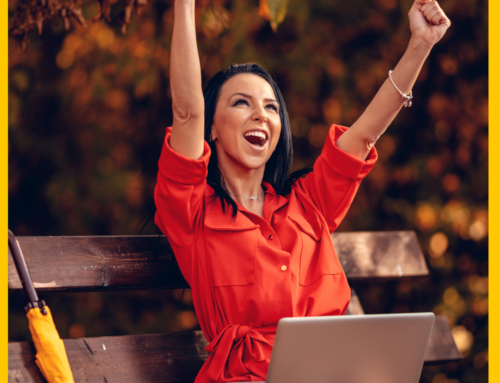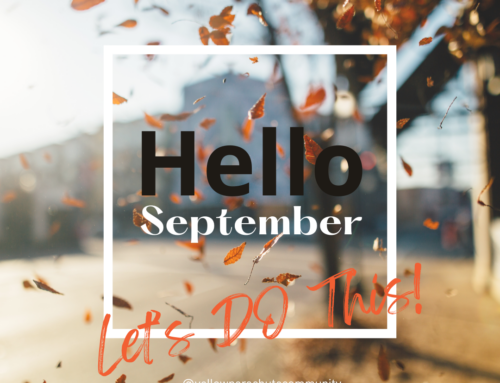“You’re never going to feel like it,” offers Mel Robbins in reference to working out. I’ll add: “But you’ll never regret it when you’re done. And it makes you stronger, too.”
How did we make this drastic discussion shift—from finding the Christmas Spirit to working out? Connection: I didn’t feel like it.
After my kids had left for school on the day I almost canceled Christmas, I’d felt worn and ragged. I’d felt like crawling under the covers and waiting until tomorrow’s new day to start again. I’d felt like skipping my Moms Connect gathering because I’d felt unworthy, uninspired, unsure about exposing my bruises and battle wounds to the winter weather and other women. And I didn’t feel like showing up.
My body responded to adversity in the natural way: it tried to fight doing hard things and then shut down. It’s a survival instinct, right? “Don’t take that new, perhaps shorter, path to the river to get a drink. You might meet a lion. Take the longer but safer way. You’ve never seen a lion there. Don’t change. Change is scary. Change is dangerous. Change is hard.” But I didn’t listen when it told me to shut down. I made the hard choice to keep moving. I didn’t give up or give in to how I felt. Because that’s not how it was supposed to go. Not my truth, not my calling, not my higher goal of living a purposeful life—with gratitude, compassion, and joy.
Our bodies will fight the hard choices and choose the easy ones, whether it’s because we don’t like change, haven’t gotten enough sleep, feel like we need to regain a little control, whether we’re hungry, bored, angry, would rather be doing something else, you name it! Fighting change, playing it safe, taking the easy way, the clear way, the path of least resistance, of instant gratification—it’s how we’re wired. (How many excuses do you make to push that snooze button?)
But there are steps we can take to overcome this knee-jerk tendency. These steps lead to the message for today: we need to guide students to think about themselves and make decisions as learners before handing them voice and choice in learning. Before they can learn to make choices about their learning and use their voice advocate for those choices, students must understand what it means to be a learner. And with instruction, vision, and belief toward that understanding, they can learn do hard and awesome things even if they don’t feel like it in the short term.
As both Yellow Parachute coach Lisa Boes and therapist Rachel Moran can attest, it takes mindful commitment to discover your core values, interests, style, and growth potential. Students first need to adopt a mindset of curiosity about their strengths and growth opportunities as learners. Without this anchor, student voice and choice is an incredibly expensive and elaborate gift, given without assembly instructions. It is a 24-hour all-you-can eat-lifetime-buffet, without any nutritional background. Delicious… but ouch… bring on the bellyache.
This might be a bit of an extreme example, but we don’t tell our new drivers: pick out a car you like and take it for a spin. Wouldn’t you cringe at the thought of a brand new driver, never before at the wheel but with an expensive vehicle on the roads—anywhere they want to go. It’s why we teach them how to use a car then watch for evidence as they master it: learn the rules of safety, orient the mirrors, practice the gas and the brake, document time behind the wheel, and then we hold our breath when the time comes for them to take “the driving test.” (Cue dramatic music.)
So why would we tell kids they can take their learning for a spin at 75 mph down a windy road, without collecting data on whether they know how to do it? I’ve seen the choices my own kids make about meals when I’m not there to gently remind them about the food pyramid: anything that comes in a box or a package is fair game. Fresh veggies, fruit, water? Nah.
But slowly and surely, as they’ve grown in understanding, skill, and passion for the sport, they are beginning to understand what it means to be hockey players and athletes. I’ve watched those crazy meal choices evolve into planning meals and healthy snacks before a game or between practices. Do you see that amazing difference?
When they view themselves as athletes, my kids make food choices based on this identity. They fuel their bodies wisely rather than on a whim or a craving. They delay gratification for the bigger picture and higher goal. And I believe this shift also happens when our kids start to think of themselves as learners. When kids identify as learners, they can understand an assignment or project’s deeper value—that bigger picture—then gain knowledge and experience from that choice, rather than simply a grade.
Where that growth collides with grace: that’s where the magic happens. Remember the rest of my morning last Friday? How compassion, joy, and gratitude lifted me to show up when I didn’t feel like it? How grace met me right where I was? This is not a one-time event. This can be repeated. And practiced. And learned. By all of us. When we choose our core values and use them to guide our choices even when we don’t feel like it. Even when our feelings beg us otherwise, when we know who we are—whether that’s a compassionate, resilient mom, a savvy-eating hockey player, or a curious learner investigating interests and creating a unique path—we can find all find grace, use our voice, make the right choice, and grow.






